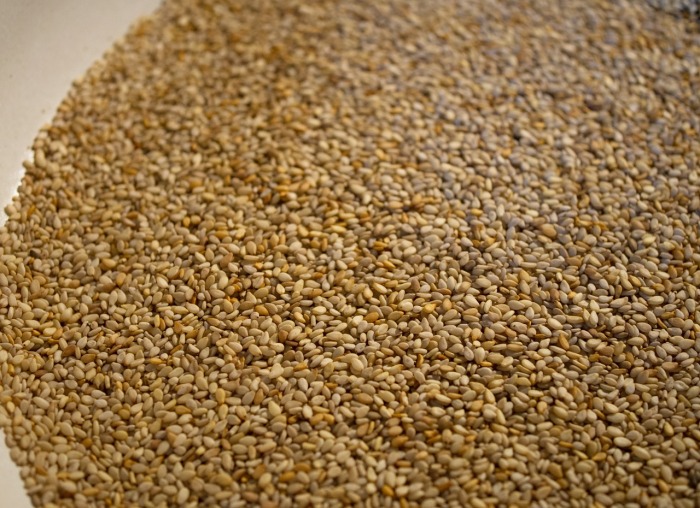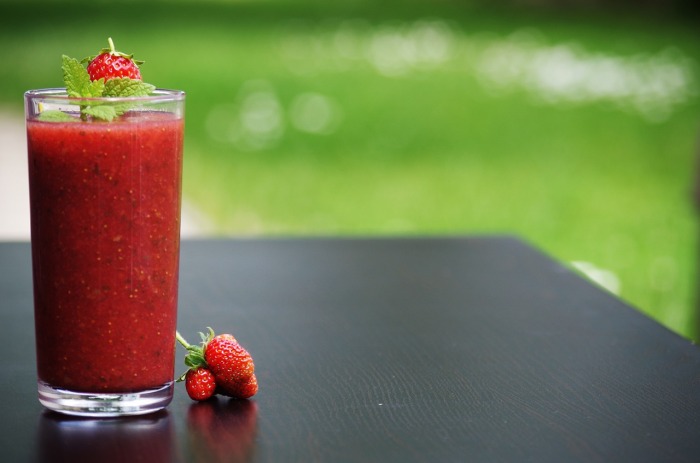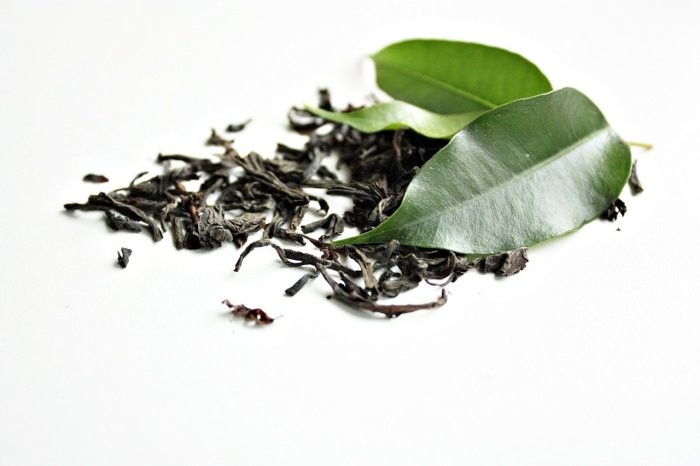
If trying to lose weight the conventional way hasn’t worked for you, stop counting calories and put your calculator away. Create a healthy master grocery list instead. Using a master grocery list makes shopping easier – and more fun. You don’t have to write a new grocery list every week unless you want to do it. Pick and choose the foods you want for the week from an abundance of healthy choices.
Even after you’ve kept the weight off, choose foods from your master list and even throw in a treat once in awhile. How often is up to you- but it’s better to keep sugary treats and processed foods out permanently or eat them once a month or a few times a year. That’s what I do. I’ll have ice cream once a month, and an occasional Dunkin’ Donut or pastry.
I have memories of visiting Albertson’s Bakery, buying and eating a pack of cherry turnovers in one day. It added a tummy bulge and ruined my teeth. If I ate one turnover a month, I wouldn’t have had those repercussions.
Sweets aren’t the only foods you should have once in awhile. You might love getting salads and meats from the deli, but even though they’re freshly made and not packaged, they may still contain too much sugar, salt and other forbidden ingredients and be packed with empty calories. You can eat anything you want as a treat now and then, unless you have a medical condition or prefer to stay a 100% clean eater at all times.

Cocoa and Dark Chocolate
Here’s some good news. You can eat healthy without giving up chocolate. Now the bad news – you’ll still need to give up milk chocolate and other high-sugar, processed confections. Snack on dark chocolate with at least 70% cacao. We’re talking about those fancy chocolate bars for sale at the checkout of Trader Joe’s and other good-for-you grocery stores.
Replace artificial, microwavable drinks like Instant Hot Chocolate Mix with Hershey’s 100% cacao powder instead. It’s all natural, has no sugar or preservatives, and boasts plenty of polyphenol antioxidants. Natural cocoa is an excellent source of:
- Magnesium
- Zinc
- Iron
- Potassium
- Calcium
- Protein
- Vitamin E
- Vitamins B1, B2, B3, B5 and B9
If you’re used to milk chocolate, unsweetened cocoa will taste bitter the first time you drink it, but it won’t take long to get used to it.
Vegetables
If you tend to put fresh veggies in the fridge and forget about them, frozen or canned vegetables keep longer and are still good for you. (Just check ingredients before buying.) Frozen vegetables are better than canned when it comes to additives. Fresh vegetables are the healthiest choice, but if they’re too expensive for you or they go bad before you have time to eat them, frozen and canned vegetables are better than no veggies.
Good veggies include:
- Cauliflower
- Spinach
- Corn
- Carrots
- Tomatoes
- Onions
- Green Peppers
- Asparagus
- Lettuce
- White Potatoes
- Sweet Potatoes
- Kale
- Broccoli
- Brussels Sprouts
- Garlic
Vary your side dishes and salads by sampling exotic veggies. Oriental eggplant, tomatillo, baby pak choy, Spanish poblanos (peppers) and aji dulce are a few of the in-demand ethic vegetables you can find today. Include more yams and sweet potatoes in your diet – they contain lots of Vitamin A, biotin, Vitamin B6, Vitamin C, potassium and Vitamin B5!

Fruits
Choose from the usual suspects (and there are a lot more of them than you realize).
- Strawberries
- Blueberries
- Bananas
- Pears
- Apples
- Oranges
- Lemons and Limes
- Grapes
- Melons
- Blackberries
You can also look into a wide selection of out of the ordinary fruits and vegetables to keep things interesting. Try mangos, papaya, tangerines, persimmons, avocados, plantains, lemongrass, guava and yucca. If you live in New York, Los Angeles or another large city, you’ll have no problem finding these and many other unusual goodies. You can even buy them online through Amazon.com.
Grains and Breads
For grains and breads, there’s a whole world out there once you move past Wonder Bread. Choose from whole wheat and multigrain bread, quinoa, buckwheat, barley, steel cut oats, groat, brown rice, millet, teff and bulgur. Check health food stores and online retailers for groat, teff and other lesser-publicized grains, and brush up on your baking skills.
Make more sandwiches with sourdough bead. It’s a probiotic food containing beneficial live bacteria. Other probiotics include yogurt, sauerkraut, miso soup, sour pickles and kefir. Probiotics aid your digestion, and studies have shown they have natural anti-depressant qualities.
Dairy
Buy organic unsalted butter, lowfat milk, organic eggs, plain, unflavored yogurt (add your own fruit), and real cheese (not the packaged, sliced kind). If you’re lactose-intolerant or have other issues drinking cow’s milk, try almond, coconut, soy or rice milk. Coconut milk is the closest to cow’s milk in texture and fat content.
Spices
Get rid of all the salt and sugar in your kitchen, except for a small amount you may need for recipes. It will be easy to develop a taste for these vitamin and antioxidant-packed alternatives –
- Ginger
- Turmeric
- Black Pepper
- Cayenne Pepper
- Paprika
- Mint
- Parsley
- Pure Vanilla
- Cinnamon
- Honey
- Red Wine Vinegar
- Apple Cider Vinegar
Nuts
Add nuts to plain yogurt, main dishes and salad for more crunch and more nutrients. Nuts are high in fiber, Vitamin E, polyphenol antioxidants and magnesium.
Stock up on unsalted peanuts, pecans, pistachio nuts, Macadamia nuts, walnuts, Brazil nuts, almonds and cashews.

Seeds
Keep pumpkin seeds, sunflower seeds, flaxseeds and chia seeds on hand to add to salads, main dishes and desserts. Bring some with you to work to snack on instead of candy and chips.
Beans
Save money and get more protein by buying beans, in bulk or canned. There are dozens of beans you can buy to fix burritos, tacos, soups, side dishes and main dishes. They include:
- Kidney Beans
- Soybeans
- Lentils
- Split Peas
- White Beans
- Lima Beans
- Black-eyed Peas
- Pinto Beans
- Black Beans
- Yellow Beans
Baked beans and peanut butter aren’t as protein-packed as the beans listed above, but they’re healthier than lots of other foods. Always keep a jar of organic, non-GMO peanut butter in your cabinet to make sandwiches or spread on bagels or crackers. Read more about the health benefits of beans at The Bean Institute.

Lean Meat, Poultry and Fish
Choose organic meats and buy fresh from the butcher when possible. Avoid cheap “priced to sell” packaged meats, hot dogs (unless they’re turkey or chicken franks) and cured luncheon meats like pimento loaf. (Although you probably avoid pimento loaf already.)
- Lean red meat with little marbling
- Wild caught salmon
- Skinless turkey and chicken breast
- Sardines
- Mackerel
- Fresh or water-packed tuna
- Pork chops (plenty of Vitamin B12)
Condiments
Instead of mayonnaise or butter, add one or more of the following to dishes, salads or sandwiches. Use extra virgin olive oil when cooking.
- Salsa
- Olive Oil
- Cholula Hot Sauce – Made with arbol and piquin peppers and spices
- Sriracha Chili Sauce – Made with red chili and garlic
- Hummus – a traditional Middle Eastern paste made of ground chickpeas, sesame seeds, olive oil, lemon, and garlic
- Pesto – an Italian topping made of crushed garlic, pine nuts, coarse salt, basil leaves, Parmesan cheese and sheep’s milk cheese , blended with olive oil.

Beverages
Replace soda (diet and regular) with healthier choices, including that zero-calorie, hydrating stand-by, water. Use a pitcher with a filter to store cleaned-up tap water at home, and pour the water into reusable plastic bottles. You don’t need to waste money buying bottled water at the store several times a day.
If you like coffee, you can still drink a few cups a day. Cut down on sugar and elaborate coffee drinks from Starbucks and other chains for a healthier java fix. Coffee, when consumed in moderation, protects against liver disease and reduces the risk of diabetes and Parkinson’s disease.
Choose from the following beverages to increase Vitamin C, antioxidants and other nutrients in your diet while quenching your thirst.
- Green Tea
- Black Tea
- Herbal Tea
- Fruit Juice
- Smoothies
- Vegetable Juice
- Kombucha
How to Cook
Steam, boil, broil, sauté, stir-fry, roast, pressure cook or microwave meat and produce – or put them in a crockpot. Most cooking methods are fine except for regular frying.
Fried foods clog arteries and increase your risk of heart disease. They inflame joints, leading to arthritis. Regular consumption of fried foods causes weight gain that contributes to diabetes and high blood pressure. Instead of high-calorie, artery-clogging fried chicken, eat roast chicken with garlic sauce.
About 95 percent of your diet should consist of whole, fresh foods, the kind your grandparents and great-grandparents ate. You don’t need to be a vegan or vegetarian to be healthy, but if that’s what you prefer, you’ll need to take supplements to make up for lack of Vitamin B12, which is only available naturally through animal products.
A note – Not all packaged foods are bad. Read ingredient lists on boxes, bags and cartons. Choose products made with natural, non-GMO ingredients.
Stay Active to Make the Most of Clean Eating
You’ll achieve better results from eating healthy if you have an active lifestyle and try to reduce (or at least control) daily stress. Exercise, positive thinking, meditation, fresh air and sunshine are necessary to keep your energy flowing. You don’t need to run a marathon or even go to the gym everyday to fulfill your activity quota. Walk more, do yoga, do stretches at your desk during break and take the stairs instead of the elevator. Stay active consistently and it will add up
Kids in the 1960s-1980s were a lot skinnier than kids today, even though they ate McDonald’s and junk food. Why was that? They played outside after school, ate home cooked dinners at night, and spent Sundays at Grandma’s for an even bigger, home-cooked meal, featuring lots of food, but no additives or preservatives. They brought packed lunches to school and drank milk or juice with it, not soda. There wasn’t time to eat too much junk food. Mom and Grandma had other plans.
Avoid the temptation to get back into old eating habits by keeping only whole, fresh foods in your kitchen. This makes it harder to go back to old eating habits and overindulge in processed or sugary foods. When you do eat processed or sugary foods again, you’ll really taste the difference and won’t eat as much. Eating clean foods makes you feel (and look) better.
What are some foods on your master grocery list? Let us know in the comments.
SUBSCRIBE TO THE DAILY HEALTH AND NUTRITION TIPS NEWSLETTER HERE




